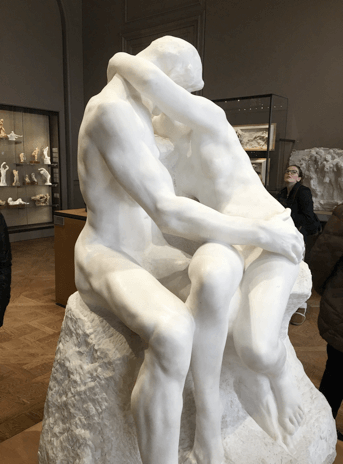Paris is simply beautiful. It is mesmerizing, enchanting and breath taking. We spent 6 days, walking for a minimum of 12 hours per day, just exploring this magnificent city. We were not deterred by strikes, rallies, heavy flooding and the closure of the Louvre and Musee D’Orsay (two of the most famous attractions).
We were on a mission to immerse ourselves in all things art. In fact due to the flooding and some closures across the city, it made us research further and seek out some beautiful, more intimate galleries and exhibitions we may not have stumbled across otherwise.
Two I can highly recommend, are the Musee Rodin and the Musee Picasso.
Musee Rodin opened in 1919, dedicated to the works of the sculptor Auguste Rodin. It is located at the Hotel Biron, 79, rue de Varenne, Paris. The collection includes some 6,000 sculptures, 8,000 drawings, 8,000 old photographs and 7,000 objects d’art.
The museum receives a whopping 700,000 visitors annually and you simply cannot go past Rodin’s most famous work, The Thinker, (a bronze copy sits poignantly in the meticulous, manicured gardens.)

The Thinker, Auguste Rodin
He was a man of vision and thankfully so, as he donated his entire body of work to the French State on the condition that they turned Hotel Biron into a museum dedicated to his works.
Perhaps his three most famous works are all exhibited – The Thinker, The Kiss and The Gates of Hell. The works of his long term lover, Camille Claudel, are also exhibited in a room dedicated to her work (There is continual speculation over what was in fact Rodin’s and Claudel’s work). The space is beautiful and the gardens are immaculate. It is definitely worth a visit to view and admire but be sure to allow at least half a day as there is just so much to absorb and admire.

The Kiss by Auguste Rodin
Musee Picasso is an art gallery located in the Hotel Sale, in rue de Thorigny, in the Marais district of Paris. The gallery is dedicated to the work of the Spanish icon and artist, Pablo Picasso, (1881-1973).
The Hotel Sale was built between 1656 and 1659 for Pierre Aubert, a tax farmer who became rich collecting the salt tax at the time, hence the name – Sale meaning `salted’. The mansion has changed hands numerous times by sale or inheritance. It was selected for the Musee Picasso after some civic and national debate.
In 1968, France created a law permitting heirs to pay inheritance taxes with works of art instead of money, as long as the works were deemed an important contribution to the French cultural heritage. Works by Picasso were obvious and welcomed. The Musee contains work by Picasso in all techinques, from all periods, and is especially rare in terms of its excellent collection of sculptures.

Picasso once said; “I am the greatest collector of Picasso’s in the world.’ He had amassed an enormous collection of his own work by the time of his death in 1973. More than 5,000 works were donated by Picasso’s family, after his death, under the law permitting heirs to contribute art in lieu of tax. Donations also came from the estate of Picasso’s last wife, Jacqueline Roque.

The stunning interior of the Hotel Sale, housing Picasso’s incredible body of work
